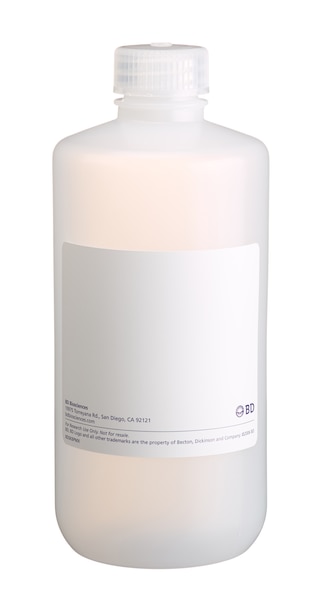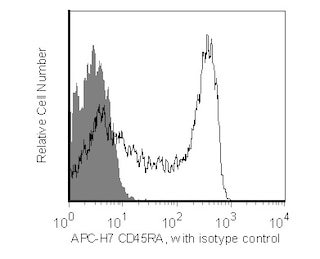Old Browser
Your account has been put on hold due to inactivity. To re-activate, check your account information and make all necessary updates.
Looks like you're visiting us from {countryName}.
Would you like to remain on the current country site or be redirected to one based on your location?
TESTING RTE CHANGE
Your account has been put on hold due to inactivity. To re-activate, check your account information and make all necessary updates.
BD Pharmingen™ Human Lineage Cocktail 4 (lin 4) (CD2, CD3, CD4, CD7, CD8, CD10, CD11b, CD14, CD19, CD20, CD56, CD235a)


Regulatory Status Legend
Any use of products other than the permitted use without the express written authorization of Becton, Dickinson and Company is strictly prohibited.
Description
The FITC Human Lineage Cocktail 4 has been designed to react with cells from the major hematopoietic lineages, such as T lymphocytes, B lymphocytes, monocytes/macrophages, NK cells, erythrocytes, and granulocytes. This pre-diluted cocktail of twelve FITC-conjugated antibodies is designed to label lineage marker-positive cells for exclusion to facilitate the flow cytometric identification of lineage marker-negative hematopoietic stem cells in human cord blood and bone marrow. Components include clone RPA-2.10, which recognizes CD2; HIT3a, which recognizes CD3; RPA-T4, which recognizes CD4; M-T701, which recognizes CD7 ; HIT8a, which recognizes CD8; HI10a, which recognizes CD10; ICRF44, which recognizes CD11b; M5E2, which recognizes CD14; SJ25-C1, which recognizes CD19; 2H7, which recognizes CD20; B159, which recognizes CD56 and GA-R2 (HIR2), which recognizes CD235a. Additional fluorochrome-labeled reagents may be combined with the FITC Human Lineage Cocktail 4, such as CD34, CD38, CD90 and CD45RA conjugates, to characterize hematopoietic stem cell populations from cord blood or bone marrow.
Preparation And Storage
Product Notices
- This reagent has been pre-diluted for use at the recommended Volume per Test. We typically use 1 × 10^6 cells in a 100-µl experimental sample (a test).
- Source of all serum proteins is from USDA inspected abattoirs located in the United States.
- Caution: Sodium azide yields highly toxic hydrazoic acid under acidic conditions. Dilute azide compounds in running water before discarding to avoid accumulation of potentially explosive deposits in plumbing.
- For fluorochrome spectra and suitable instrument settings, please refer to our Multicolor Flow Cytometry web page at www.bdbiosciences.com/colors.
- Please refer to www.bdbiosciences.com/us/s/resources for technical protocols.
Companion Products






Development References (4)
-
Baum CM, Weissman IL, Tsukamoto AS, Buckle AM, Peault B. Isolation of a candidate human hematopoietic stem-cell population. Proc Natl Acad Sci U S A. 1992; 89(7):2804-2808. (Biology: Flow cytometry, Fluorescence activated cell sorting). View Reference
-
Bhatia M, Wang JC, Kapp U, Bonnet D, Dick JE. Purification of primitive human hematopoietic cells capable of repopulating immune-deficient mice. Proc Natl Acad Sci U S A. 1997; 94(10):5320-5325. (Biology: Flow cytometry, Fluorescence activated cell sorting). View Reference
-
Pang WW, Price EA, Sahoo D, et al. Human bone marrow hematopoietic stem cells are increased in frequency and myeloid-biased with age. Proc Natl Acad Sci U S A. 2011; 108(50):20012-20017. (Biology: Flow cytometry, Fluorescence activated cell sorting). View Reference
-
Park CY, Majeti R, Weissman IL. In vivo evaluation of human hematopoiesis through xenotransplantation of purified hematopoietic stem cells from umbilical cord blood. Nat Protoc. 2008; 3(12):1932-1940. (Methodology: Flow cytometry, Fluorescence activated cell sorting). View Reference
Please refer to Support Documents for Quality Certificates
Global - Refer to manufacturer's instructions for use and related User Manuals and Technical data sheets before using this products as described
Comparisons, where applicable, are made against older BD Technology, manual methods or are general performance claims. Comparisons are not made against non-BD technologies, unless otherwise noted.
For Research Use Only. Not for use in diagnostic or therapeutic procedures.
Report a Site Issue
This form is intended to help us improve our website experience. For other support, please visit our Contact Us page.